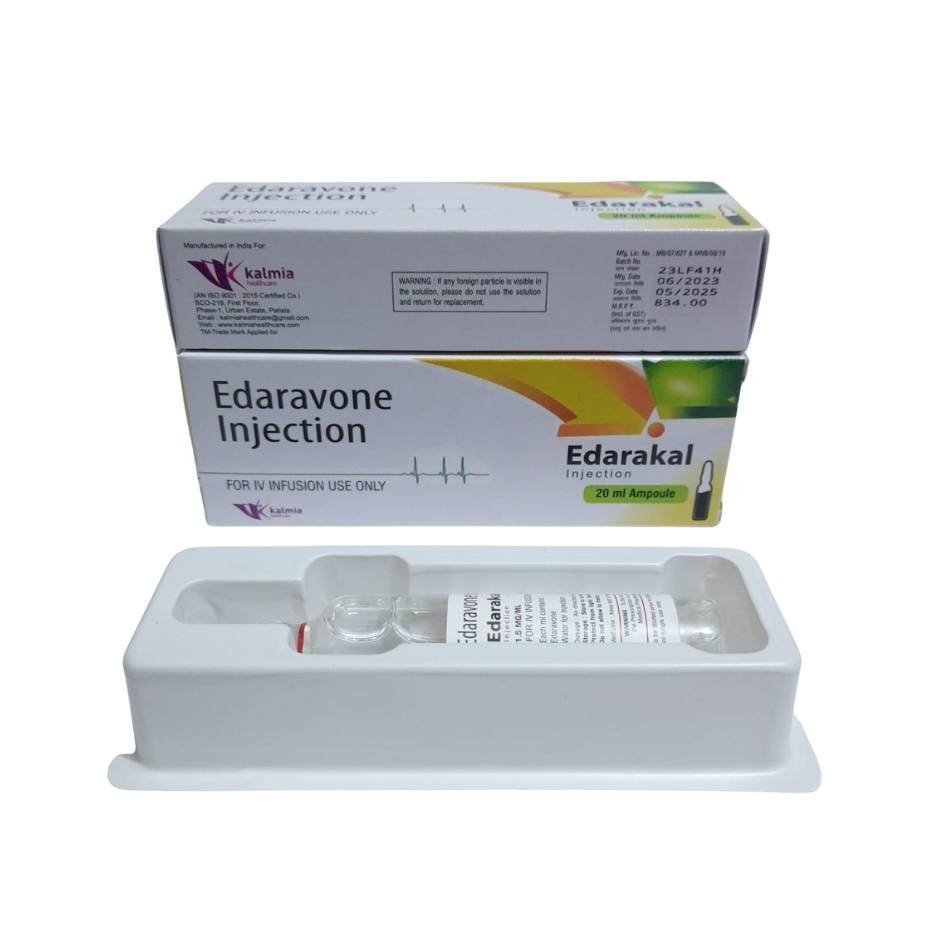
Edaravone 20ML Injection
Functions as a free radical scavenger, which prevents the oxidative damage of brain cells.
Functions as a free radical scavenger, which prevents the oxidative damage of brain cells Enhances neurological outcome in ischemic stroke Delays the development of ALS, and allows maintaining motor activity.
Certified Products
pAYMENTS
Customer Support
Certified Products
PAYMENTS
Customer Support
Functions as a free radical scavenger, which prevents the oxidative damage of brain cells Enhances neurological outcome in ischemic stroke Delays the development of ALS, and allows maintaining motor activity.
Functions as a free radical scavenger, which prevents the oxidative damage of brain cells Enhances neurological outcome in ischemic stroke Delays the development of ALS, and allows maintaining motor activity.
FAQ
Q1: What is EDARAKAL Injection?
A1: It is primarily applied in acute ischemic stroke and in patients with Amyotrophic Lateral Sclerosis (ALS) to retard the rate of disability.
Q2: What is its administration?
A2: EDARAKAL is administered intravenously as an infusion by a medical professional, typically in 30-60 minutes.
Q3: Does it treat ALS?
A3: No, it does not cure ALS but delays the rate of functional decline, allowing patients to remain independent longer.
Q4: Is it long-term safe?
A4: Long term usage is deemed to be safe with medical supervision, but liver functions and allergic reactions have to be monitored periodically.
FAQ
Q1: What is EDARAKAL Injection?
A1: It is primarily applied in acute ischemic stroke and in patients with Amyotrophic Lateral Sclerosis (ALS) to retard the rate of disability.
Q2: What is its administration?
A2: EDARAKAL is administered intravenously as an infusion by a medical professional, typically in 30-60 minutes.
Q3: Does it treat ALS?
A3: No, it does not cure ALS but delays the rate of functional decline, allowing patients to remain independent longer.
Q4: Is it long-term safe?
A4: Long term usage is deemed to be safe with medical supervision, but liver functions and allergic reactions have to be monitored periodically.